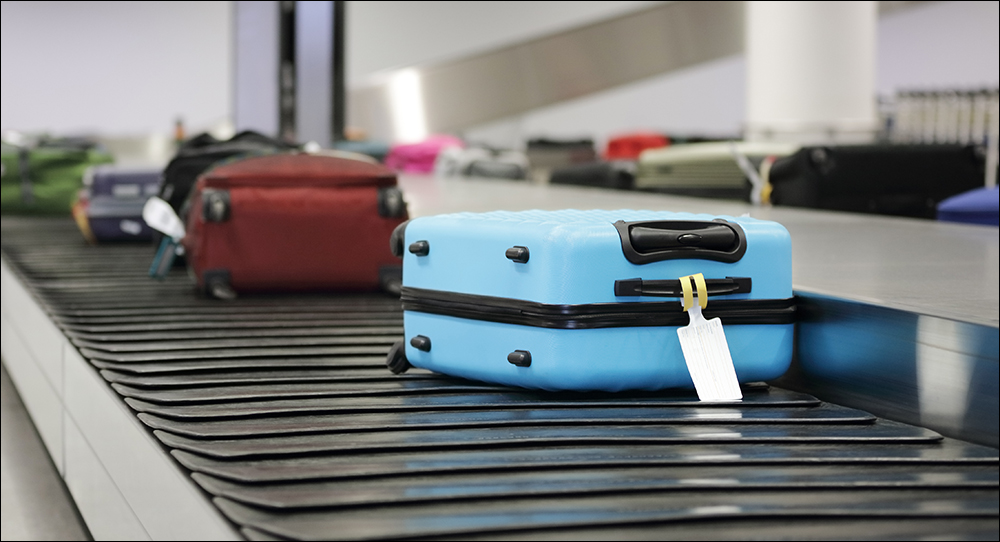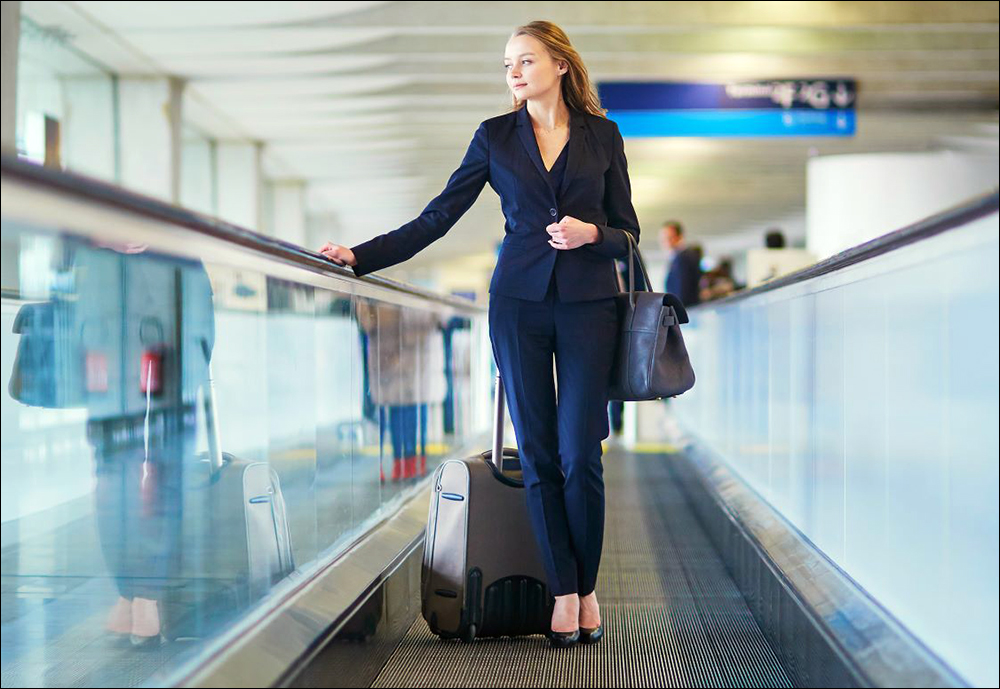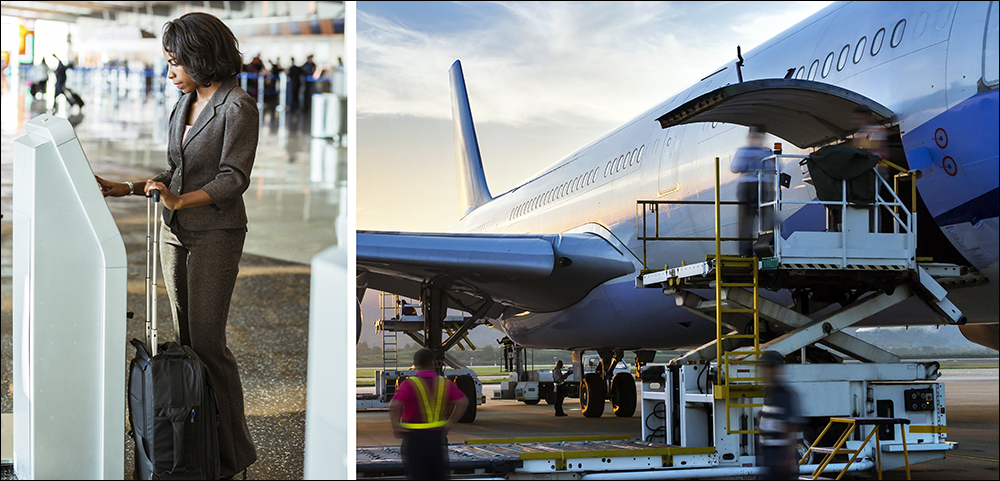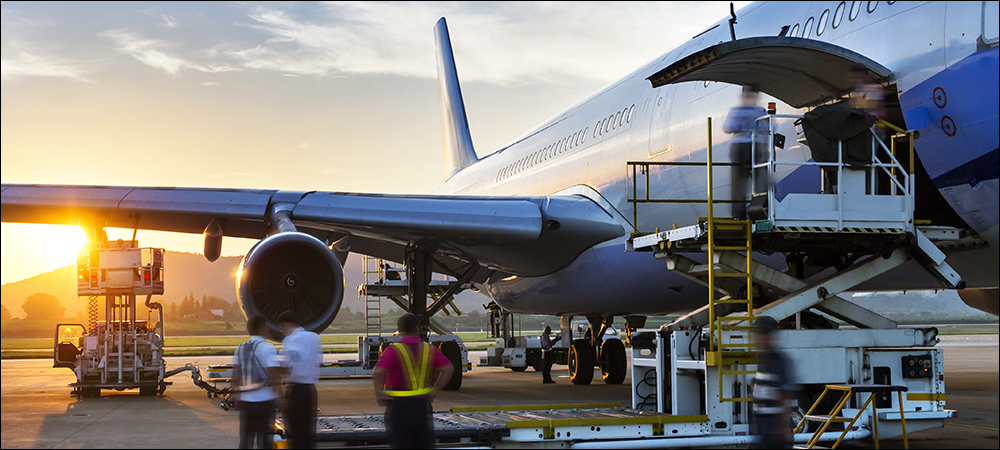Although many vacationers experienced losing their luggage last summer while flying, it shouldn’t happen much longer. The 2018 International Air Transport Association (IATA) Resolution 753 was put in place to ensure system-wide baggage tracking is in progress, with the recommended solution of using UHF (RAIN) RFID. These days, most travelers still see the familiar barcodes on their luggage. But believe it or not, some of these baggage labels carry a tiny UHF RFID tag, too, similar to those used in many retail stores to increase inventory accuracy.
Why were so many bags lost last year? The reason is that many airlines and airports still need to implement the technology and install the infrastructure required to read these tags. We’re in a transition phase that allows both UHF RFID tags and barcodes to be handled together. This article outlines the limitations associated with tracking bags using barcodes, why IATA recommends UHF RFID, the challenges related to hybrid barcode/RFID tags, and research into expected infrastructure expenditure.

Where’s My Bag?
As airlines and airports scale up again post-COVID-19, the reality for many holidaymakers is lost luggage—particularly when some items inside suitcases have been packed specifically as holiday essentials. Whether it’s a smart outfit for a wedding or a pair of walking boots for a bucket-list mountain climb, these things are tough to replace on short notice.

Susanne Hazrati
Since the early 1990s, the air transport industry has dramatically cut mishandling rates by using barcodes printed on luggage tags. These barcodes are used to track the bags’ progress from check-in to retrieval. Readers scan each unique barcode at various points to ensure the bags get to where they need to go.
While recent data from IATA reports that passenger demand for air transport continues to recover ground, the organization predicts full post-COVID recovery is not expected until 2024. Still, according to the U.S. Department of Transportation’s recent Air Travel Consumer Report, more than a million bags were mishandled—either delayed, damaged or stolen—between January and June 2022 by U.S. airlines alone. In relative terms, that figure amounts to only 0.62 bags mishandled per 100 enplaned, but it’s still significant, with both financial and goodwill impacts.
Each mishandled bag can cost airlines as much as $100, and then there is also damage to customer loyalty and overall journey experience to consider. Although barcodes were instrumental in lowering mishandling rates, there are inherent technological limitations—mainly the slowness and inaccuracy of the reader technology. That’s because each barcode is either read by hand or via an in-line array of readers at certain points on the baggage conveyor system.
For a successful read, the barcode label needs to be in direct line-of-sight of the reader. In addition, the barcode label needs to be presented cleanly, with no wrinkles, scoring or damage. Obviously, these conditions are challenging to meet on a fast-moving conveyor belt, resulting in a significant share of all barcode reads involving some error. Each time a read error occurs, the bag must be diverted and identified manually, which adds labor and introduces delays, especially with regard to changing custody between airlines, ground handlers, airlines and airports.

Why 2018 IATA Resolution 753?
Based upon these growing concerns, IATA took action and issued Resolution 753 (R753), which is an obligation on IATA airline members and stakeholders to track baggage accurately. R753 requires all IATA members, which amounts to 290 airlines carrying 83 percent of the world’s air traffic, to meet the specified guidelines. An alternative tracking system IATA recommended would use some form of wireless technology for baggage handling.
Of the wireless technologies available, the industry views UHF RFID as a proven and cost-effective solution. Tens of billions of UHF RFID chips are already in use for inventory control, supply chain and logistics applications, particularly across the retail industry. UHF RFID tags offer fast and accurate end-to-end tracking, enabling organizations to know the status of their inventory. The IATA has recommended its use in other airline applications, and it’s the logical match for baggage handling.

How to Implement RFID
One key benefit of implementing UHF RFID is that since it is a passive wireless technology, the tag does not need a battery to operate. The tag utilizes energy supplied by the reader to transmit and receive data. Another benefit is that, unlike barcode readers, UHF RFID readers do not need line-of-sight for a read, resulting in very high levels of accuracy compared to barcode reading. In addition, multiple tags can be identified simultaneously, involving hundreds of items per second. This means that instead of a ground handler having to read each barcode tag individually, a UHF RFID reader can scan bag tags for an entire flight within just a few seconds.
Compared to a barcode read point, which can cost tens of thousands of dollars, a UHF RFID read point can cost much less. Because the technology is much cheaper, more read points on a baggage conveyor system and mobile readers on a tarmac become viable. Potentially, readers can be on the back door or trolley wagon. Indeed, airlines and airports could gain visibility both airside and groundside, enabling an end-to-end flow from terminal A to terminal B, and from airline A and airline B.
The UHF RFID tags can be disposable or designed for repeated use. Some airlines have already implemented repeated-use tags for frequent flyers, enabling them to skip check-in, for instance. However, the more likely implementation is in the form of a single-use printed tag, with the adhesive backing of the label securing the UHF RFID chip and antenna. In that way, there is no experiential difference for the passenger.
The Transition: A Hybrid System
There will likely be a hybrid system during the transition from barcode to UHF RFID baggage tags. The barcode readers will remain in place, and as more UHF RFID read points are introduced, the two technologies will work in tandem. At some point, the expectation is that UHF RFID will become the predominant technology to track luggage, with barcodes used for backup in much the same way manual reads are used today.
As a basis for R753 compliance, UHF RFID technology can enable airlines to make mishandled bags a thing of the past, improving efficiency, lowering operating costs and increasing customer satisfaction. The rollout of UHF RFID has already begun. Airports are starting to tag luggage to ease check-in. Hong Kong Airport, for example, tags bags with UHF RFID for airline transfers, and airports in the Delta Air Lines network are also using the technology.
NXP‘s UHF RFID technology, UCODE, is widely used in retail, logistics and baggage tagging. With improved read and write sensitivity, the latest UHF RFID technology enables baggage systems to track and trace luggage with up to 100 percent read rates. In addition, the reading speed allows for efficient handling of large volumes of bags. The newest UCODE 9xm variant enables systems requiring higher performance and larger airport or airline configurable tag memory to store additional anonymous information, such as the bag’s destination, negating the need for a database lookup or providing redundancy when there is a connectivity blackspot.
As the technology of choice for baggage handling, UHF RFID is set to enable airlines and airports to create the travel experience that everyone wants. I am sure lost luggage will become a thing of the past. As an avid traveler, I look forward to bidding farewell to lost luggage.
Susanne Hazrati, NXP‘s global marketing manager for UCODE, is responsible for the implementation of RAIN RFID technology in emerging markets. Having worked for almost a decade at NXP, Susanne is experienced in various passive technologies and is well connected through the ecosystem value chain. She completed her master’s degree in innovation management. Her current position, which involves developing new markets for the contactless technology, lets her build on her passion for innovation. Susanne’s overall aim is to make lives more efficient and convenient.


